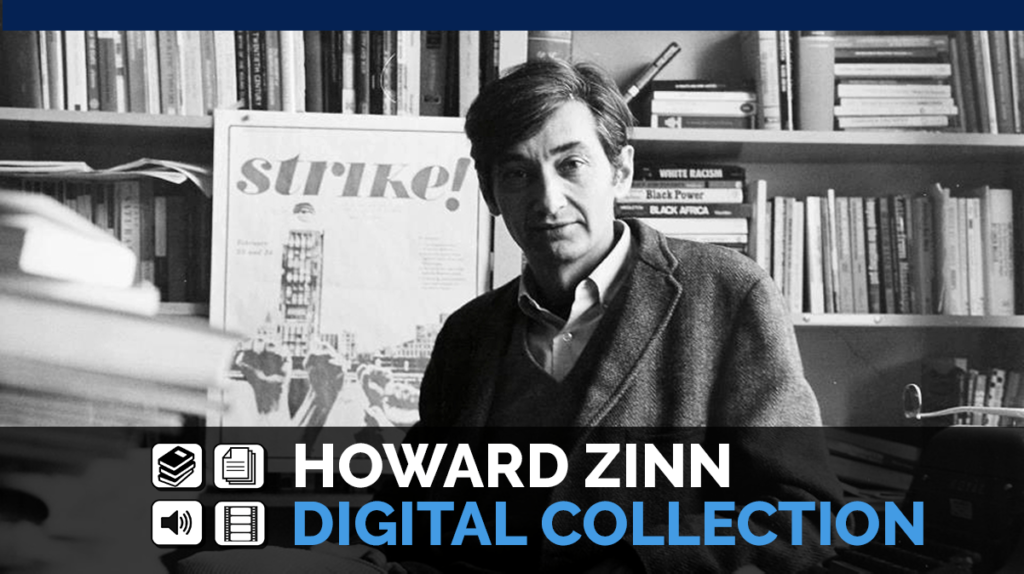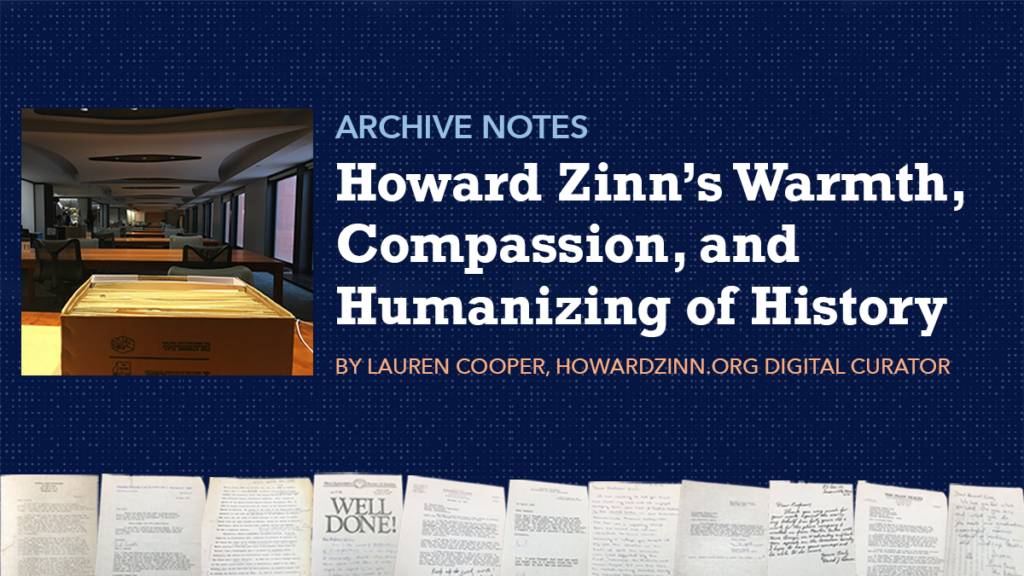
By Lauren Cooper, HowardZinn.org Digital Curator
In 2022–2023, I had the opportunity to spend three weeks going through the Howard Zinn Papers housed at New York University’s Tamiment Library. Thanks to a research grant and additional funding, I hired two research assistants, Molly McBride Jacobson and Cole Stallone, to help with processing and strategizing. Our work focused on cataloging the Zinn Papers at the item level. That is, documenting every item in every folder in every box and recording specifics such as dates, page counts, locations, correspondents, the type of material it was, and subject matter. As with many archives, the materials are only cataloged at the folder level and it is difficult to know how many pages are in each folder or the details of their content.
We began this work by focusing on the 108 boxes of “Series II: Correspondence, 1962-2010.” The depth of warmth and appreciation that comes through in those letters written to Zinn is touching, it is moving, and it is familiar. In biographies of Zinn, you will read what a kind and warm person he was. This is made evident in his more than 7,000 pages of general correspondence alone. It is clear these people felt seen; that Zinn had acknowledged their experience with compassion.
Being able to focus intensely on his correspondence crystallized how Zinn’s warmth, humor, and compassion drew in people across many segments of the population, and how he was a connector of people; he connected people to have the opportunities to tell their stories with those who could amplify them.
For instance, in a letter dated February 1, 1965, from Patricia Marx at WNYC Radio, she comments on Howard’s and his wife Roslyn’s warmth:
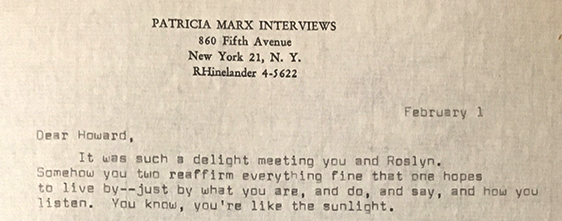

It was such a delight meeting you and Roslyn. Somehow you two reaffirm everything fine that one hopes to live by — just by what you are, and do, and say, and how you listen. You know, you’re like the sunlight.
Marx thanks Zinn for suggesting Fannie Lou Hamer and Jim Forman to be interviewed. She writes:


And I was fortunate enough to get hold of Mrs. Fannie Hamer …How right you were! She was absolutely magnificent. It is a very moving interview, I think, and the experience of meeting someone so courageous and filled with love and good faith is unforgettable. I told her that you had recommended her as the best possible person to talk to, and had spoken so warmly of her. I think that she was very pleased by that.
Another thread that becomes visible as one goes through Zinn’s papers is the foreshadowing to writing A People’s History. In 1973, Zinn was asked by historian John Garraty to write a 700-word biography of Martin Luther King Jr. for Encyclopedia of American Biography. Zinn was given a factual sketch which Zinn marked up, revising it, placing King within a movement, and describing his leadership with a sense of action.
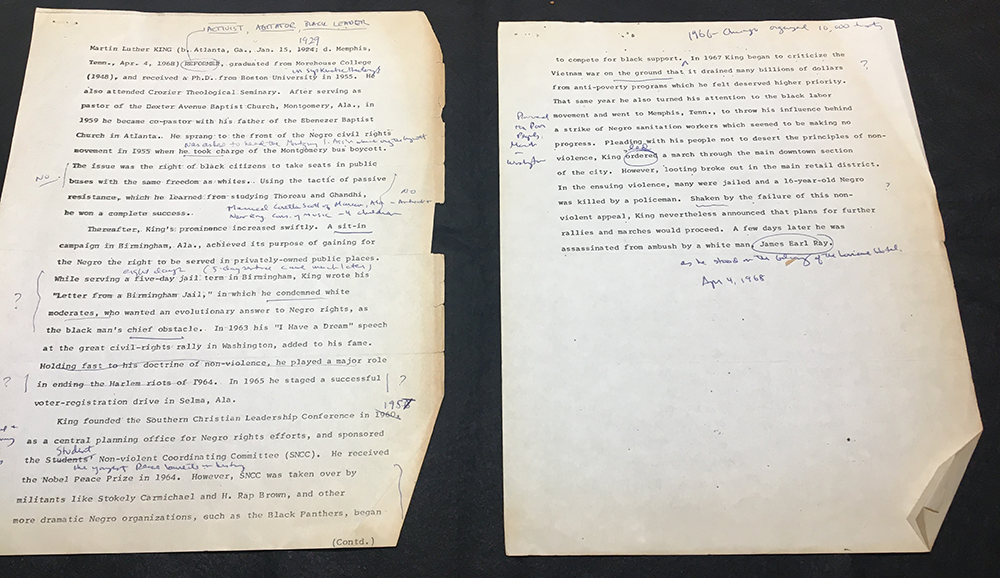

In this first example, Zinn first corrects King’s birth year from 1924 to 1929, and instead of describing King as a “reformer,” Zinn jots down active descriptors — Activist, Agitator, Black Leader.

Zinn edits the passage that King “took charge” of the Montgomery Bus Boycott to “he was asked to lead the Montgomery Bus Boycott by the association who had organized the boycott.”
There’s a firm “NO” written next to the supposed reason for the boycott; it wasn’t just the issue “of Black citizens to take seats in public buses with the same freedom as whites.” Zinn also jots some personal details to be added, including marrying Coretta Scott and having four children.
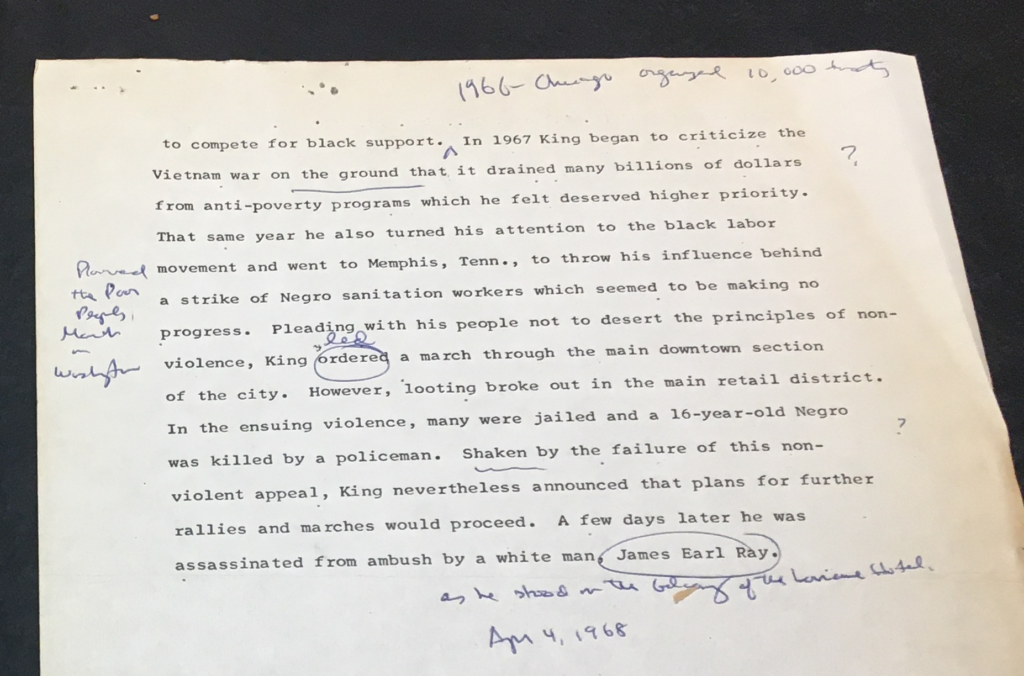
On the next page, Zinn continues to shift the tone from “King ordered a march” to “King led a march,” which also places King in a movement of people.
Additionally, Zinn illustrates King’s life with specific details and additions as noted below in brackets.
- [1966 – Chicago organized 10,000 (tenants)] In 1967, King began to criticize the Vietnam war on the ground that it drained many billions of dollars from anti-poverty programs which he felt deserved higher priority.
- That same year he also turned his attention to the Black labor movement and went to Memphis, Tenn. to throw his influence behind a strike for Negro sanitation workers, which seemed to be making no progress. [Planned the Poor Peoples March on Washington]
- A few days later, he was assassinated from ambush by a white man, James Earl Ray. [as he stood on the balcony of the Lorraine Hotel, Apr. 4, 1968]
This example demonstrates how easy and how impactful it can be to write with compassion, centering the humanity of people, and framing them as part of a larger organized resistance.
A version of this was presented at the Howard Zinn Centennial: Historian and Artist Panel in August 2022

